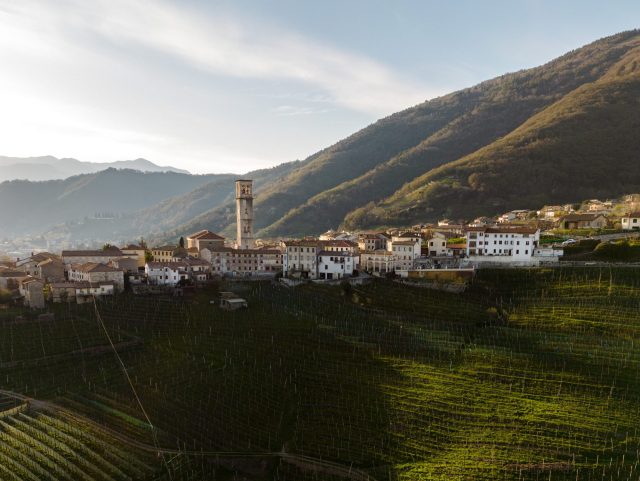This website uses cookies so that we can provide you with the best user experience possible. Cookie information is stored in your browser and performs functions such as recognising you when you return to our website and helping our team to understand which sections of the website you find most interesting and useful.
Discovering Val d’Oca’s Rive, the essence of terroir
Prosecco producer Val d’Oca’s Rive Collection offers a taste of the unique soil characteristics of some of Conegliano Valdobbiadene’s most sought-after slopes.

Val d’Oca, established in 1952, strives to find a balance between a respect for tradition, design culture, and the ability to be ahead of the times, aiming to produce wines that are both classic and contemporary. born from the passion of a group of wine growing families that have been part of the landscape for generations.
The production covers the full range of Prosecco appellations, including Prosecco DOC, the designation for the region as a whole, as well as the more specific zones of Conegliano Valdobbiadene Superiore DOCG and, neighbouring it to the east, Asolo Superiore DOCG. Val d’Oca also produces sparkling wines at a range of sweetness levels, from extra brut, with below three grams of residual sugar per litre, up to dry, which will have around 23g/l.
The brand’s flagship wines are those in its Rive Collection: Rive di Santo Stefano Extra Brut, Rive di San Pietro di Barbozza Brut, and Rive di Colbertaldo Extra Dry
The term ‘Rive’, singular ‘Riva’, describes a steep slope, and in the context of Conegliano Valdobbiadene, it describes a specific zone in much the same way that a Burgundian cru does.
Overall, Conegliano Valdobbiadene has 43 Rive, and Val d’Oca has plantings in nine of these, covering 120 hectares, around a quarter of the total area.
Each Riva’s unique soil and subsoil composition gives the wines their own unique, terroir-driven personalities – the way the roots of the Glera vines function is a direct consequence of the ground they are planted in.
The Rive di Santo Stefano, in the municipality of Valdobbiadene, is the northernmost riva in the appellation and is characterised by soils rich in clay, with an absence of skeleton and great depth. The resultant wine has a great freshness, thanks in part to the soil’s retention of water helping to prevent over-ripening, with aromas of white flowers and a long-lasting perlage.
San Pietro di Barbozza, also in Valdobbiadene, presents sandy-loamy soils with a prevalence of morainic substrates, with a skeletal texture – the Prosecco from this riva is similarly fresh and, due to its steepness, the required hand picking means that only the best fruit is utilised.
The Rive di Colbertaldo, in the muncipality of Vidor, is composed of soils that tend to be clayey-loamy, where the roots directly touch a rocky substrate. In addition to the textbook floral bouquet that consumers know and love Prosecco for, there is also a touch of almond on the nose.
To find out more about Val d’Oca and its Rive Collection, click here.

Related news
Matching terroir to variety at Burgenland’s Kollwentz winery
Sherry Week celebrates gastronomic potential of historic wines

